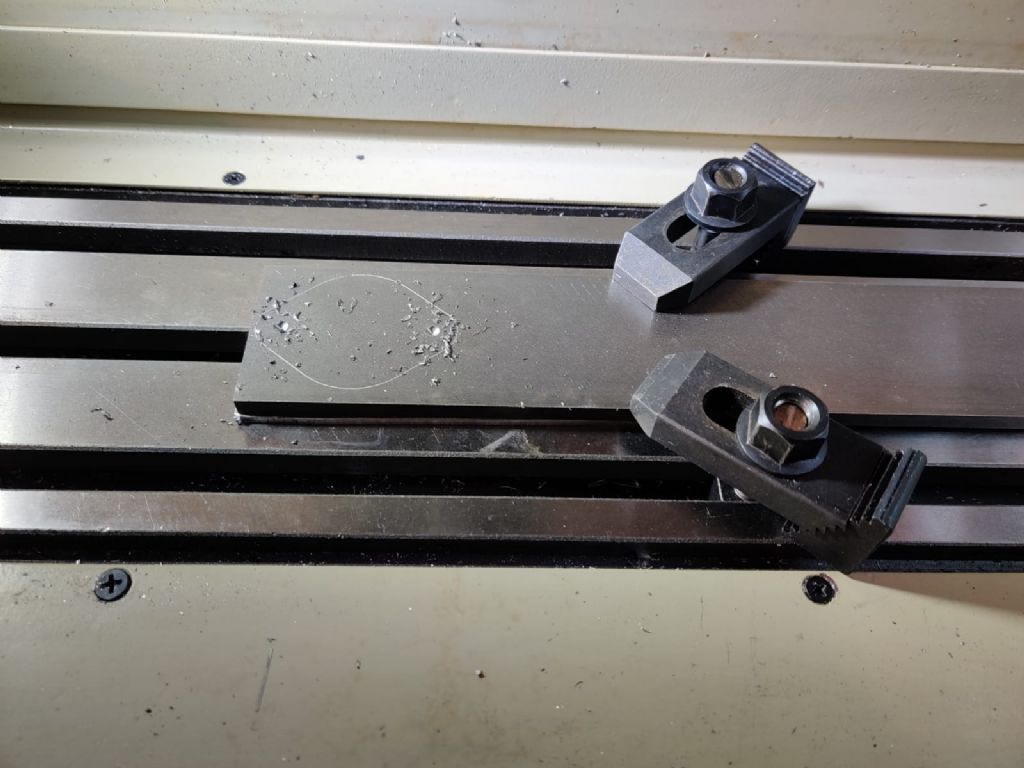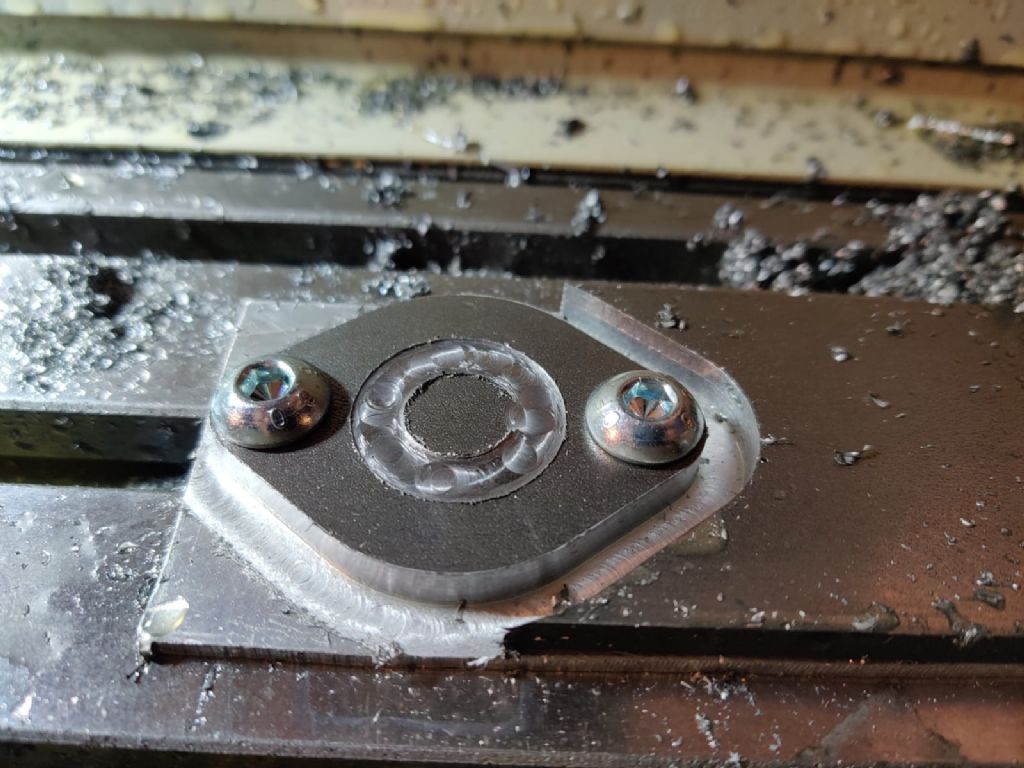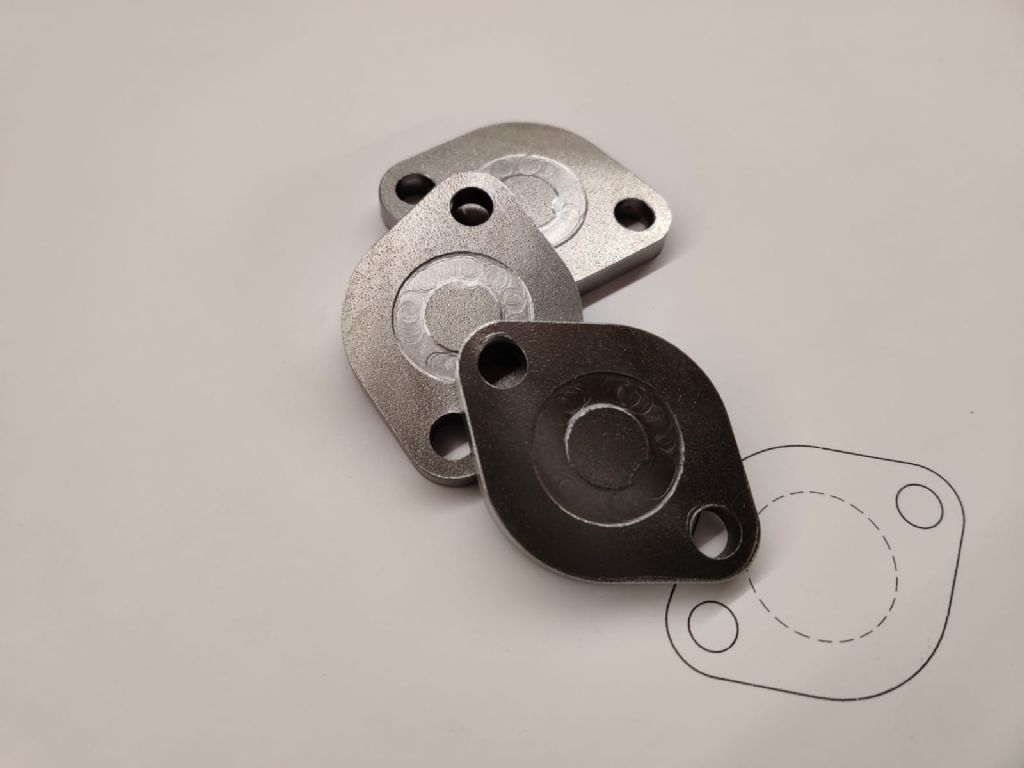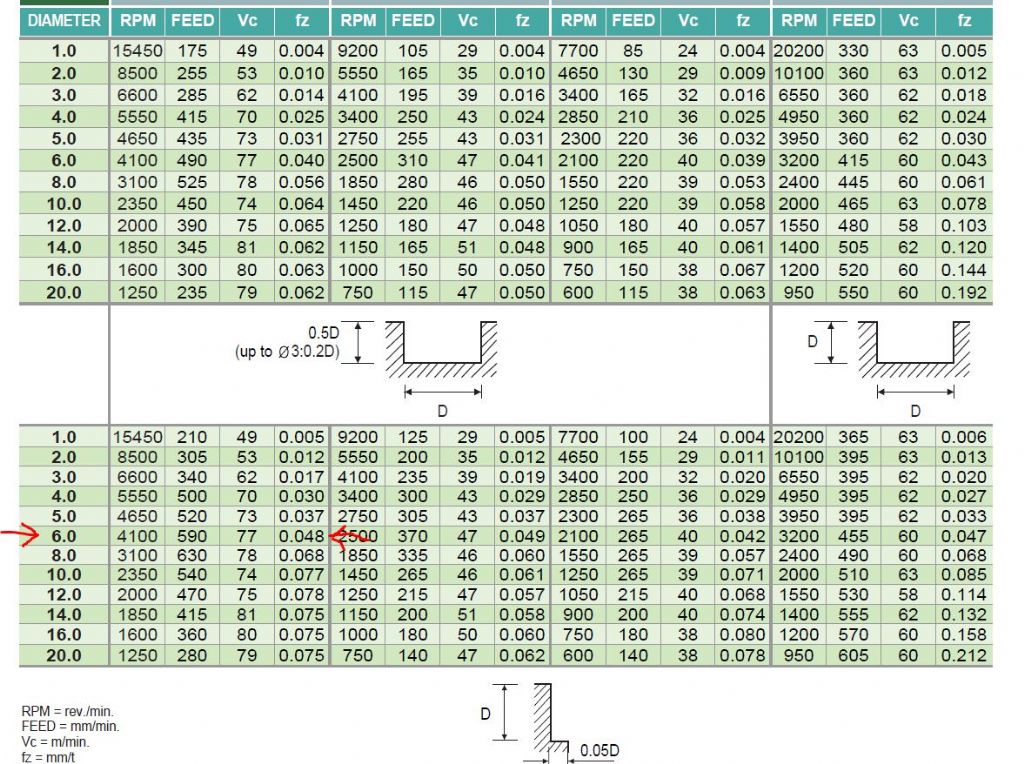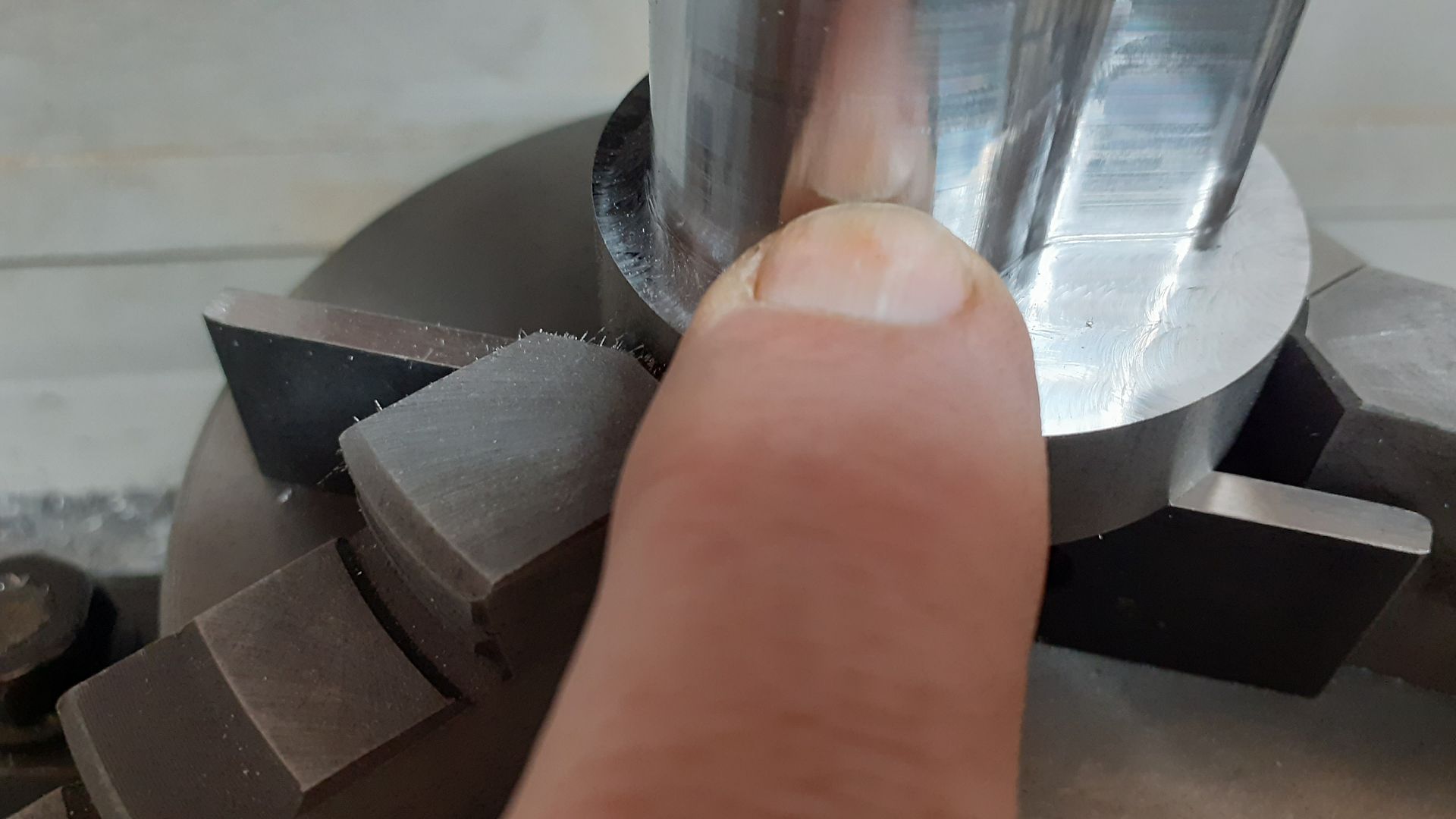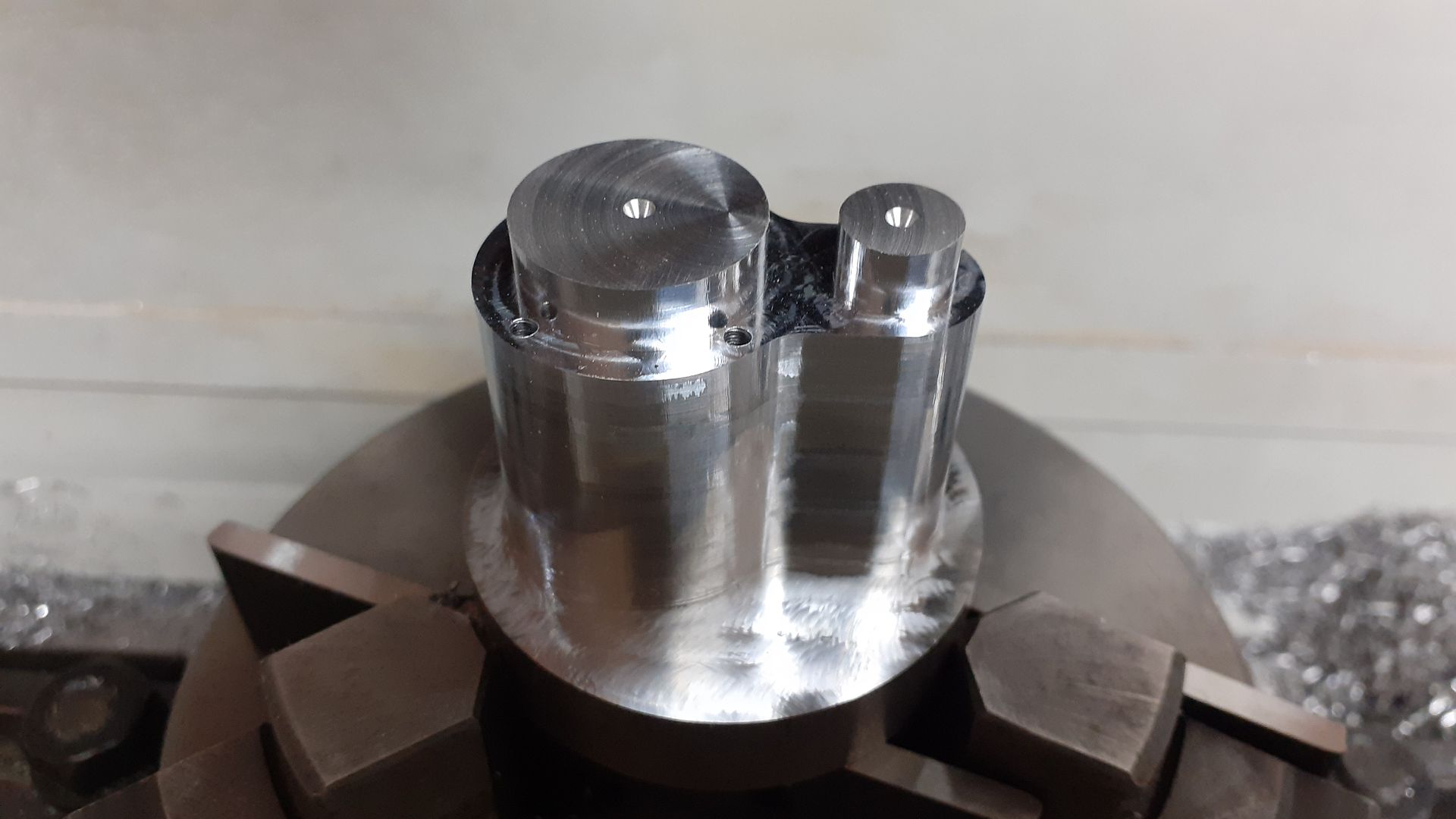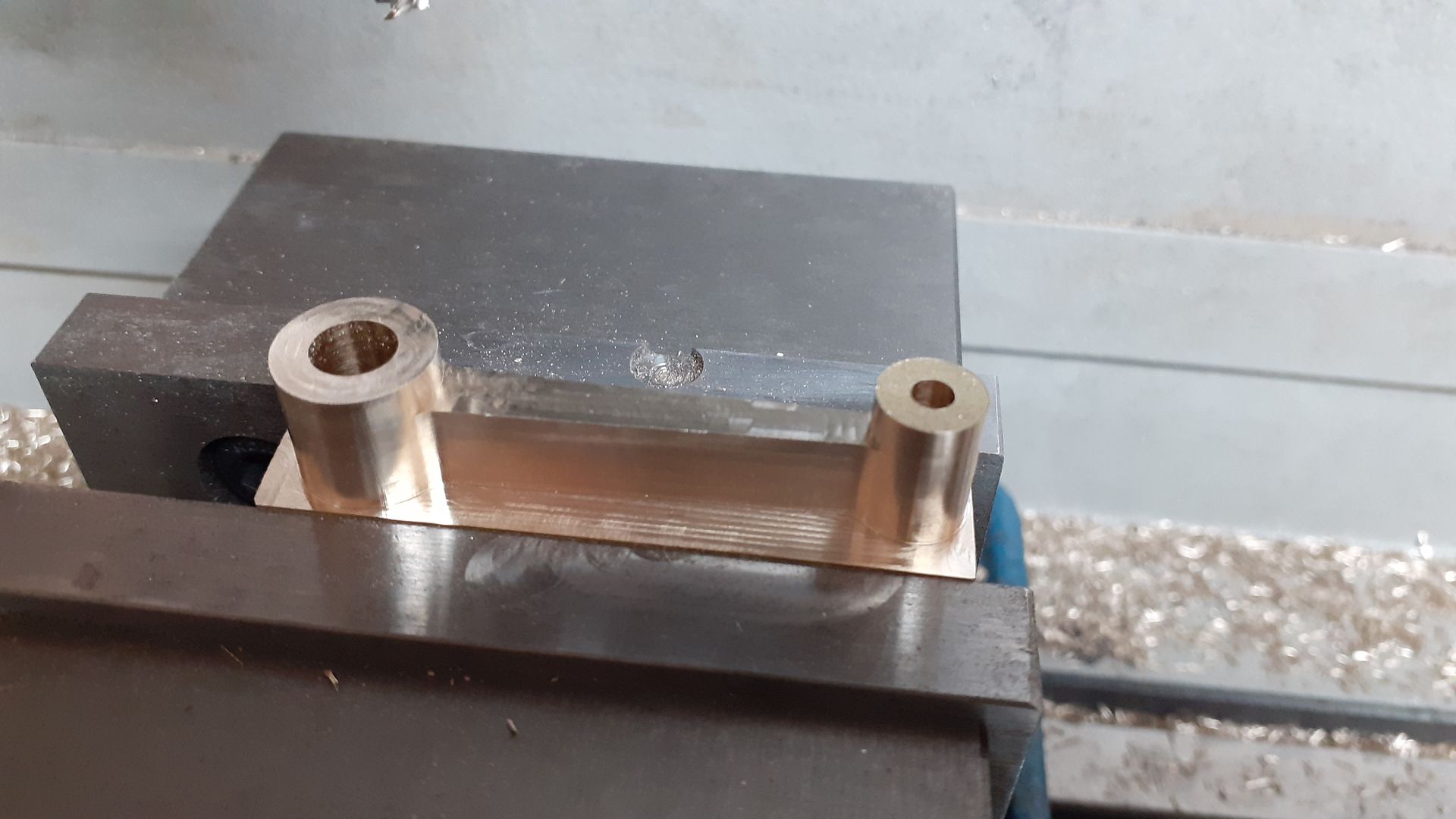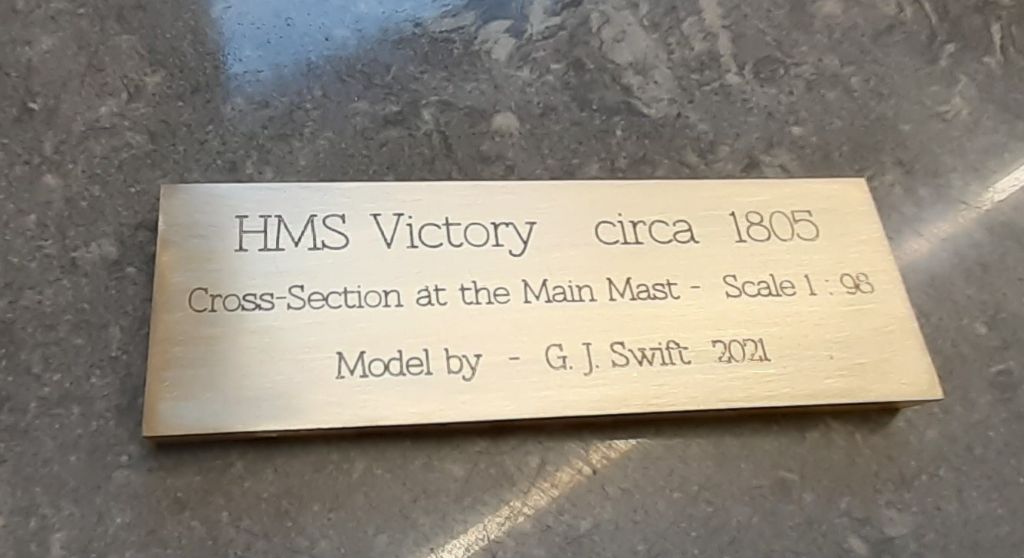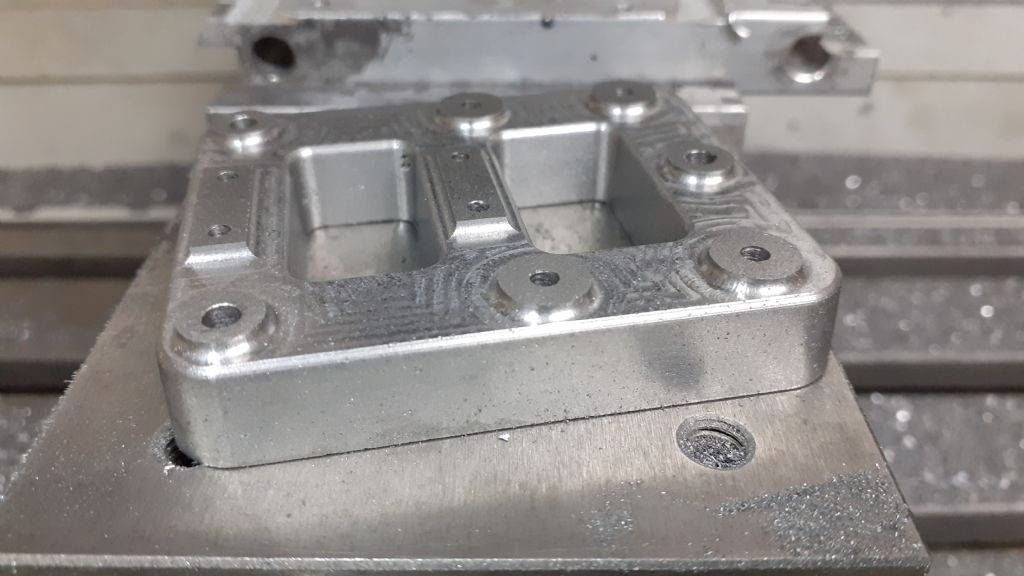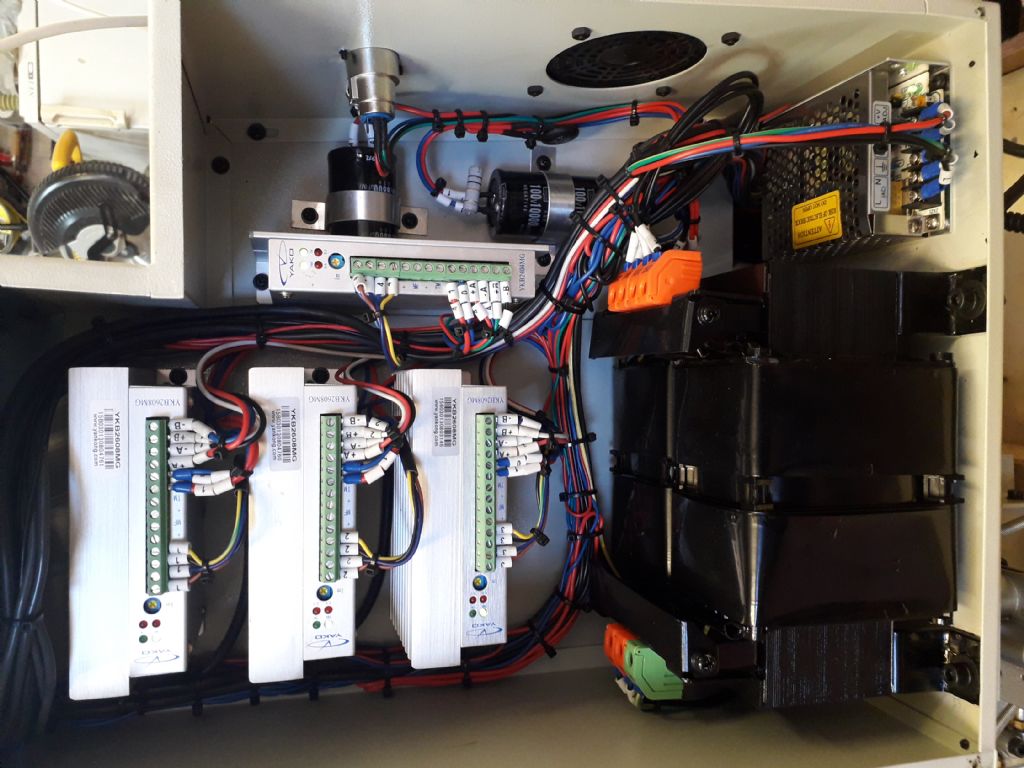One of the members of MEM forum has just upgraded his machine to a 1.1Kw teknomotor HFspindle and posted some test cuts with it, I queried the 18,000rpm that he was running the HSS cutter at and an interesting discussion about HSS/Carbide and various feeds and cuts followed. You will need to register to see most of the images which are posted as attachments if you are not already a member
This lead me to sacrifice a bit of 6082 to see how quickly I could convert it into a pile of chips.
As I have mentioned before I tend to use 3-flute cutters most of the time so this was no exception and I chose an Aluminium specific one from APT with a 55degree Helix that had had some but not too much use.
They give some suggested parameters for side cutting of 13,000rpm and 1,500mm/min feed so working that back to my maximum spindle speed of 5000rpm gives a feed of 577mm/min. They don't give how large the side cut can be but most other makers seem to suggest an Ae (sideways feed) of 0.1 D so I went with this making each pass 0.6mm. Ap (vertical Depth) of side cutting seem to either be given at 1D or 1.5D so I went half way with 1.25D which equates to 7.5mm. I drew up a simple block 2" (51mm) wide with a 0.6 x 7.5mm rebate in it and produced the code to cut that at various Fz (chip load) values and simply altered my Y axis zero by 0.6mm each time to compensate for the previous cut. Once I got to 500mm/min I just used the override to increase in steps of 20% eg 100mm/min.
For the first few cuts I just dabbed on a bit of paraffin but for the 800m/min and above also turned on the air as I was having problems getting the fluid to flow with the air. and being an external cut the chips were doing a reasonable job of staying away from the cutter anyway.
At no time did the machine seem to be under any strain, there was a bit of vibration on the 450mm/min pass but that was from the chip guard rather than the cutter. I stopped at 1000mm/min as I did not want to push too much and risk metal welding to the cutter or worse. Even at the highest feed the finish was quite good for what is a roughing cut with a fine series of vertical lines that could be seen when held to the light but not felt with a finger nail.
I'm not sure how often I will run at 1000mm/min as it will depend on the job as to any increases in cutter engagement or getting the chips out if a small pocket is being cut but it is nice to know what the machine can handle.
I put video and an image of the cut surface together with the feed rate son a video, couple are not the best for focus and I also mucked up the 600 & 700 videos but there was nothing exciting to see there anyway.
Sarah F.


